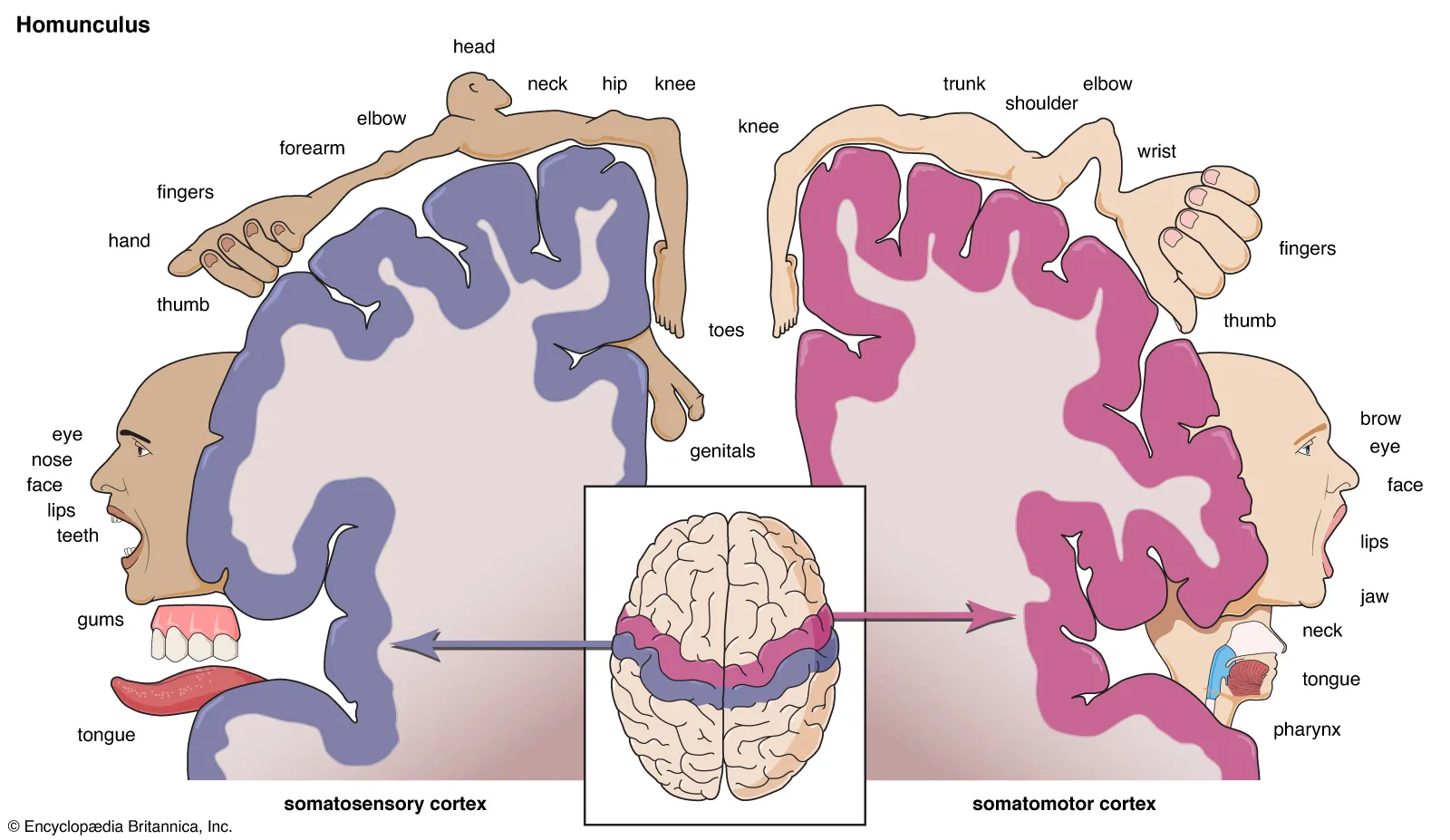The Connection Between the Brain and the Body
Recently, I’ve been writing a series about “Major Symptoms,” but this time I’ll change the topic.
Homunculus… Some of you may have heard about it from a science class in school.
The “Homunculus” was proposed by an American named Wilder Graves Penfield, a Canadian neurosurgeon.

He used the term “Homunculus” (originally from Latin meaning “artificial human”) to indicate the area with the most stimulation in each region of the primary motor cortex and the primary somatosensory cortex in the human brain.

Authored by Mpj29
It’s a globally famous diagram, initially presented by Penfield, and it’s also represented in the form of a figurine. Both the motor area and the sensory area have large representations of the hands, face (especially the lips), and tongue.
Penfield clarified in an easy-to-understand way which parts of the body are more easily stimulated to brain and which areas are more easily stimulated by the brain.
It’s often said that children who learn the piano from a young age will “grow up to be smart.” Indeed, stimulating the brain with more stimulus may promote the development of neural pathways. (The meaning of “getting smarter” depends on the context, though…)
According to research in Japan, over half of the university students who have entered the country’s top universities (I’ll leave it to your imagination where) have either practiced or continued to play the piano during their childhood.
Furthermore, many facilities, such as elderly care homes, actively incorporate activities such as puzzles or juggling for dementia prevention and improvement. There are also facilities that regularly play Rakugo (traditional comedic storytelling) for the residents.
Instead of repetitive movements such as typing on a keyboard (memorized movements), encouraging activities that involve complex movements and reflex reactions, or being in an environment where you can laugh regularly, are the secrets to keeping both the body and the brain healthy and maintaining a healthy mind.
In households with children who read this blog, I believe that encouraging children to participate in activities that involve using their hands or activities they enjoy – which result in smiles and expressive faces – as hobbies, considering their future, will ultimately contribute to the development of intelligent individuals.
By the way, in my opinion, chefs and managers of Michelin-starred restaurants are often sharp-minded and intelligent because they can make comprehensive calculations, such as judging situations and the order of dishes. This aligns with the Homunculus diagram, as cooking involves using hands, being sensitive to taste, and having a wide range of tongue areas in the brain.
This discussion isn’t directly related to chiropractic, but rather it’s about the growth for children and the prevention for the elderly based on stimulating brain regions.
However, chiropractic treatment indirectly relates to such aspects as well. Improving body circulation and blood flow is essential for supplying oxygen and nutrients to the brain. For the elderly, for example, coming for appointments on time (time management) or having conversations with the practitioner, or simply having something to look forward to by going to that place, provides various stimulus and contributes to the nourishment of both the body and mind.
At Spine Chiropractic, I approach chiropractic treatment with a multifaceted perspective, considering everyone’s health.
I will support you in spending healthy and wholesome days both physically and mentally, so please feel free to visit my clinic for your body’s care when you are around Yokohama, Bashamichi, Nihon Odori, Kannai, or Sakuragicho.